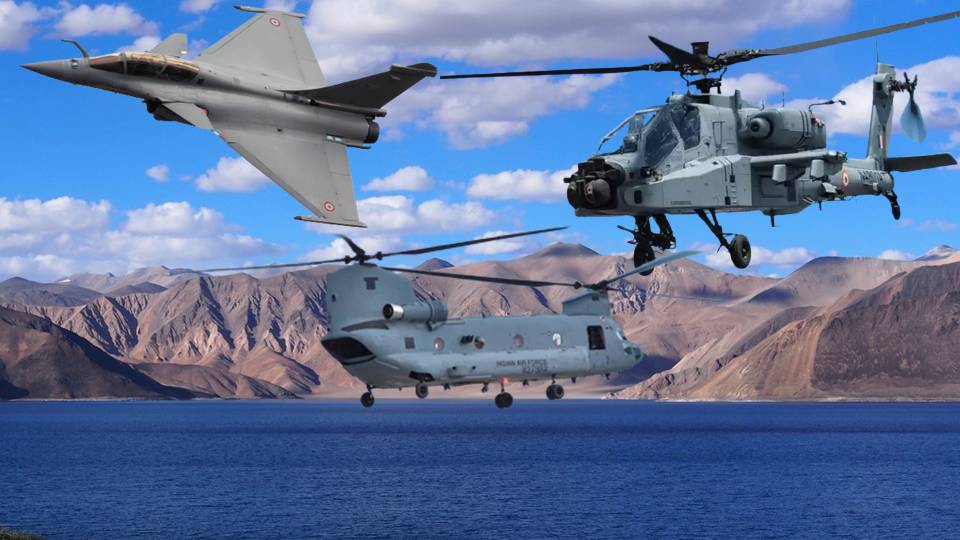With the strategy of salami slicing, rather than causing the large-scale military escalation to grab land, China uses small provocative methods to transgress its neighbour’s land. ‘Nibbling like a silkworm’, they claim the area through aggression, and then back off when faced with strong resistance from the opposite side.
On June 15, 2020, China was trying a similar salami slicing strategy to grab Indian land in the Galwan Valley of Ladakh. When the world was battling the Chinese virus, the minion soldiers of the Chinese Communist Party tried to transgress the Indian land. Indian Army not only thwarted the nefarious attempt of China but buried them in the mountain ranges of the Himalayas. Further, they made such strong security architecture around the area that the Chinese are pleading to pacify the situation.
Fighter jets ready for an offensive strike
In an exclusive interview with Asian News International (ANI), Air Chief Marshal VR Chaudhari has revealed security arrangements of the Indian Air Force to counter Chinese misadventure near the Line of Actual Control. In the interview, he said, “Chinese aircraft activity is closely monitored by us. Whenever we see Chinese aircraft or remotely piloted aircraft coming too close to the LAC, we take appropriate measures by scrambling or putting our aircraft on higher alert. This has deterred them quite a lot”.
Speaking about the installations of air defense systems after the Galwan clash, he said, “We had started deploying our radars all along the LAC in eastern Ladakh sector. Gradually we have integrated all these radars with our integrated Air Command and Control System so that we are able to monitor the air activity across the LAC.”
Also Read: “Double Fish Hook” Strategy – India’s Coup De Grace that will rip China apart
Strong defense build along the LAC
Unlike the 1962 War, this time India is fully prepared to bleed China in the Himalayan region. China’s back and forth strategy was met with India’s offensive-capable military hardware. In less than a month after the clash, the Defense Acquisition Council of the Ministry of Defense cleared the fast-track procurement of weapons worth $5.55 billion. Under which India was ordered to upgrade 59 of its MiG-29 and buy 21 more MiG-29 from Russia for about $ 1 billion. Further, 12 Russian-made Su-30MKI fighter jets were ordered from Hindustan Aeronautics Limited for $1.51 billion.
To upgrade its firepower in war, the government approved the procurement of ammunition for Pinaka multi-barrel rocket launchers; an armored division of BMP-2 infantry combat vehicles; software-defined radios Nirbhay land-attack cruise missiles; and Astra beyond-visual-range missiles.
Moreover, emergency procurement of Excalibur artillery rounds for M777 ultra light howitzers from the US, Igla-S air defense system from Russia and Spike anti-tank guided missiles from Israel were approved.
Increasing the capacity of the Air Force, many air-to-air missiles, air-to-ground missiles, smart bombs, chaffs, flares, and precision-guided munitions were procured. In its military build-up, India deployed Apache attack helicopters, Chinook weight lifting helicopters, Rafale combat jets, and advanced versions of SWITCH tactical drones for high-altitude areas like Ladakh and Airborne Early Warning and Control (AEW&C).
These weapons are capable of launching both offensives as well as defensive strikes. With the smart guiding capabilities of radars and satellites, these highly sophisticated weapons of the Air Forces are ready to engulf the salami slicing strategy of China.
Support TFI:
Support us to strengthen the ‘Right’ ideology of cultural nationalism by purchasing the best quality garments from TFI-STORE.COM
